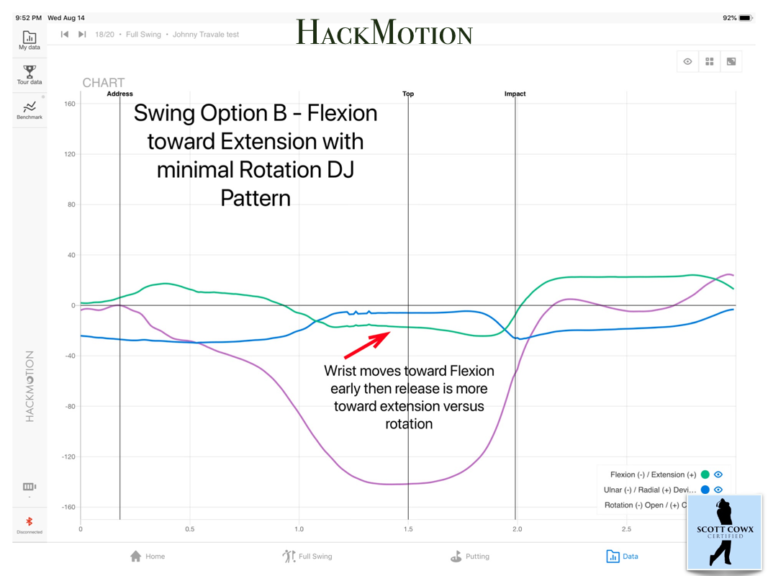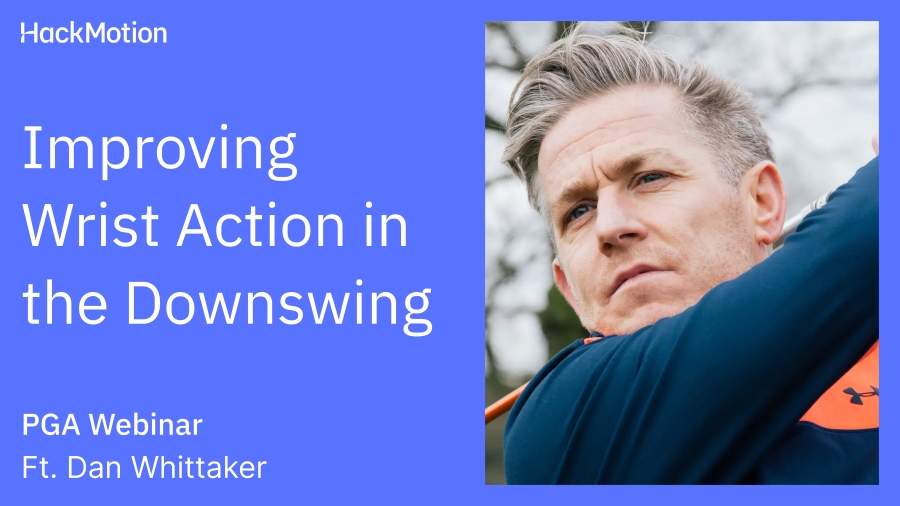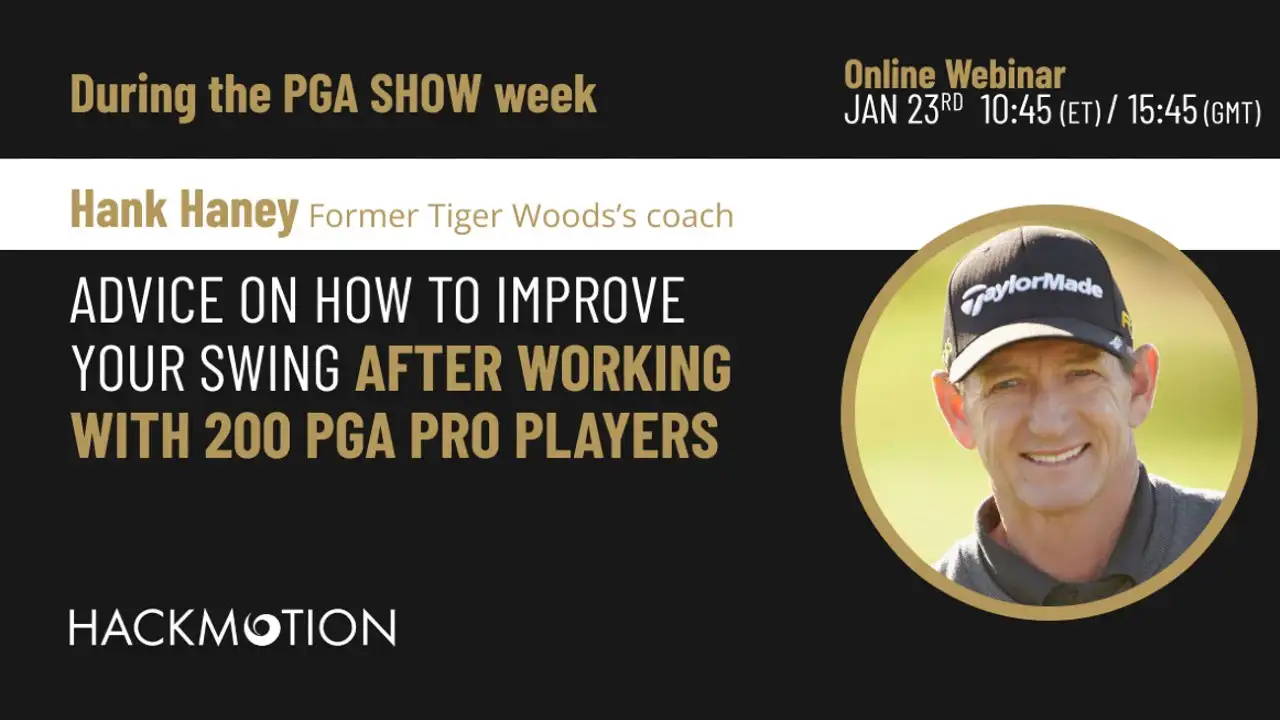Golf Swing Insights from Scott Cowx
This month, we are highlighting the coaching insights of PGA coach Scott Cowx.
Scott is the 2019 Canadian PGA Teacher of the Year and is regarded as on of the top coaches in the world, especially in the field of swing biomechanics.

Quick Questions Answered by Scott Cowx
What are your greatest strengths as a coach?
SC: Ability to understand the anatomy and its effect on wrist conditions and club delivery.
What is your best golf-related achievement?
SC: 2019 Canadian Teacher of the Year – Coaching Junior to PGA Winner.
Why did you start using HackMotion?
SC: The simplicity of having a very clear picture of what is happening at the wrist level.
How does your typical HackMotion lesson look like?
SC: Initial testing. Explanation of what needs to change. The corresponding body movements/positions to change the wrist conditions. End of lesson testing.
What is your favorite HackMotion feature?
SC: The graphical data and the live feedback.
What type of players benefit the most from using HackMotion?
SC: All players!
How can golfers get in touch with you?
SC: @scottcowxcertified on Instagram.
Golf Swing Insights from Scott Cowx
Scott Cowx was recently featured on the podcast Golf 360. Start to listen at 1:13:25 -1:30:00 to hear Scott talk about how Hackmotion sensor, and the data on tour players’ swings, have helped him recognize and classify different swing patterns.

Understanding Different Types of Swings
In the podcast, Cowx talks about using Hackmotion to understand the wrists in a golf swing. When releasing, golfers can move their speed into three different locations: extension, around the forearm (supination), and in the radial/ulnar plane.
Through his work with Hackmotion data, Cowx has identified different swing patterns, and has characterized tour players into certain groups based on commonalities in their swing.
In total Scott has defined four Tour player release patterns, but the following two are most common.
Wrist Option A – Stable extension towards flexion, with supination – “Turn Down release”
- Players like Tiger Woods, Rory McIlroy and Tommy Fleetwood.
- At impact the speed of the clubhead is released more with wrist rotation (supination) rather than with wrist extension. Wrist stays in flexion a little longer.
- These players usually play a draw.
- Usually great wedge players, pitchers and chippers – because they learn to control the loft of the club with the amount of flexion.
- Great at hitting stingers and different shot shapes.
- See the graph with HackMotion data below – Swing Option A.
Wrist Option B – Flexion to Extension – “Cobra pattern”
- Players like Dustin Johnson, Collin Morikawa, Victor Hovland and Brooks Koepka.
- Almost 180 degree opposite of stable extension pattern.
- They push their lead wrist into flexion in the backswing, maintain it in
downswing and release the flexion at impact (movement towards
extension), very little supination. - These players usually play a fade.
- Players with hard flexion tend to play long shots very well, great drivers of the ball. But they tend to hit very uniform “stock shots”.
- Can struggle with pitching and chipping, as they deloft the club during backswing and need to get it back at impact, by scooping, potential low point issue.
- See the HackMotion graph below – Swing option B: flexion towards extension.
- “Cobra Pattern” name comes from the trail arm being very twisted at the top of the backswing and coiled up – just like a snake. This is caused by lead wrist flexion.
As players get older they have less ability to separate their upper and lower body, so it is harder for them to play with “Cobra Pattern”.
They are just not flexible enough. Rotation of the body is key for selecting the correct pattern for the player.


Today, more golfers are pushing their wrists towards flexion, which requires less of a transition of wrist alignments before impact.
But, as Cowx reminds us in the podcast, players can have a predisposition towards a certain swing pattern, and it’s important not to force a swing pattern onto a player. Whichever player’s core pattern is, developing consistency is key.
This is where Hackmotion can help. With individualized data, you can see what type of swing pattern you naturally use, and then use data to continue to refine and hone in on your swing.













